© 2025 ALLCITY Network Inc.
All rights reserved.

Drafting in the top five of each round puts a lot of pressure on an NFL front office.
Coming up short can set a franchise back years, just like hitting on just a third of those picks can set a team up for a decade with a young core to build on.
The Denver Broncos 2018 rookie class is still a work in progress, but the first couple of weeks have seen promising early returns.
Of course, it helps when a player who wasn’t even drafted is leading the way.
Which is why for this week’s film room, we went back to the tape to see where the Broncos youngsters have made contributions, analyzing if their success is sustainable and also breaking down what areas these first-year players can keep working on.
Lindsay’s success in limited touches
Two weeks in, Phillip Lindsay has been amazing for a multitude of reasons. Not just the fact that he’s third in the league in rushing yards, despite going undrafted, or that he’s doing it at a slender 5-foot-8 and 190 pounds, it’s not even the fact that he’s an all-around back at that size.
The most impressive part of Lindsay’s early success has been his ability to lead Denver in rushing yards despite only receiving 29 carries in two games, with an average of 6.1 yards per carry.
Of the top 40 rushers in the NFL, only two other non-quarterbacks have a higher average; league leader Matt Breida and fellow Colorado native Austin Ekeler.
Lindsay’s ability to make the best of limited opportunities is essentially the story of his life and a testament to the type of playmaker he is. Simply put, No. 30 is a threat to take it to the house every time he touches the ball.
While we could’ve imagined Lindsay becoming a big play weapon as a receiver after the preseason, where it seemed clear he would get opportunities in space, as a runner, it would’ve been harder to predict such early success.
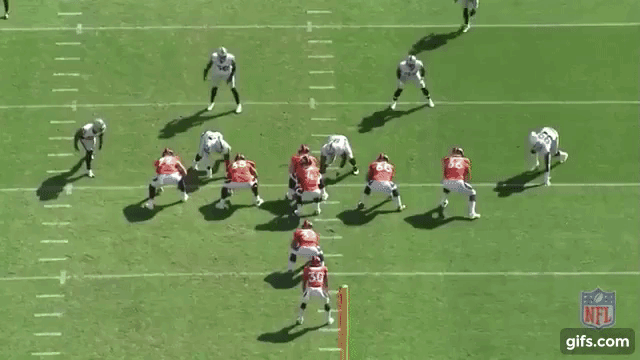
It’s not just Lindsay’s 4.3 40 time that makes him a home run threat, it’s his combination of vision, balance and his electric feet that make him a dynamo in the open field, as he can break defender’s ankles with quick cuts.
Lindsay’s big, 53-yard run isn’t just a great example of his running style, but of how dangerous he can be on draw plays — a wrinkle Denver has thrown into their offensive game plan the past two weeks that will keep defenses on their toes as the season rolls on.
When a runner is this dangerous on draws, that play almost works like a play-action fake, as defenses will have to be aware of the delayed run when the quarterback is dropping back in the pocket. That moment of hesitation will open up space for the passing game underneath, giving the Broncos a multiplicity on offense that they’ve been lacking for some time.
Lindsay also runs with deceptive power, which is where his balance comes into play, as he’s seemingly impossible to bring down on first contact and can just bounce off tackles.
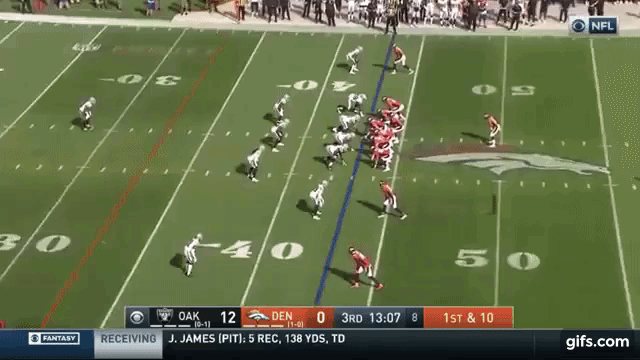
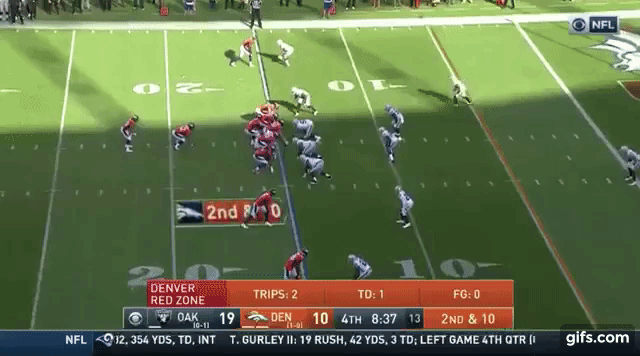
The power and balance with which the Aurora native runs have already made him a valuable asset in short down-and-distance, where his diminutive stature and ability to run low to the ground allows him to squeeze through gaps.
What makes Lindsay lethal is that he’s done the majority of his damage on runs in between the tackles. The glimpses he’s shown to get outside on tosses, sweeps, or by simply breaking a run outside, have been extremely promising.
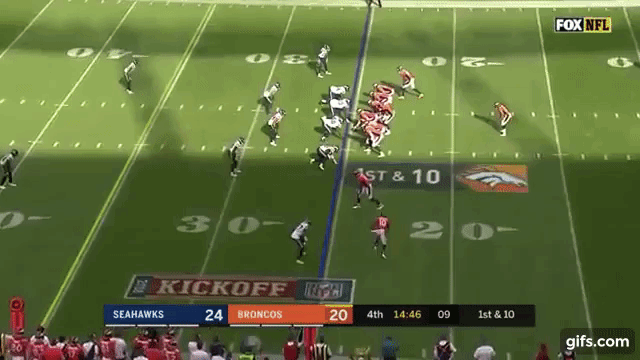
Feeding Lindsay with more outside runs, where he can exploit defenders in space, will make him that much more dangerous.
Another area in which the talented rookie has only shown glimpses thus far is as a receiver, where he already has a touchdown but has only been targeted four times with three receptions.
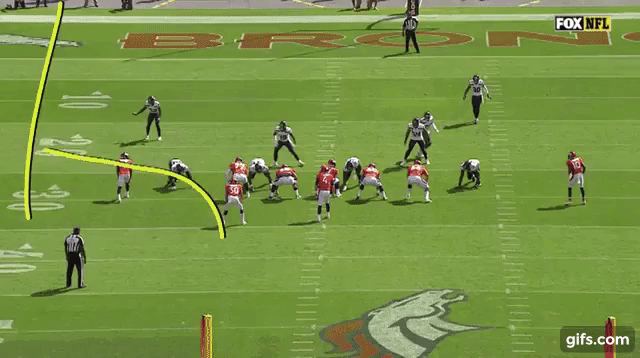
Mind you, in his final two seasons at Colorado, Lindsay had 76 receptions for 750 yards. Given his ability as a runner in space and how hard he is to match up with for linebackers, he could be exploited as a receiver a lot more.
The crazy thing when rewatching Lindsay’s 32 touches in the first two weeks is that he can still improve. There have been plays—like the outside toss below — where he wasn’t able to beat a defender to the corner, or like his wildcat run, where he was stopped with a masterful tackle but could’ve broken off a big gain if only he had beaten that one defender.
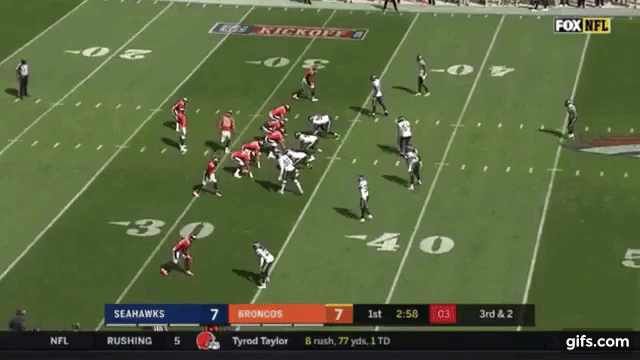
The young runner is so dynamic in space, and still so green in his NFL experience, that when things start to slow down for him, he’ll make those plays.
A concern with Lindsay is he can run a bit upright, though he’s good about lowering his shoulder when he takes on contact and is so elusive he rarely allows defenders to square him up.
At his size, it is legitimate to wonder if he can keep handling 15 touches a game, especially considering that, right now, Denver desperately needs him to have all those opportunities.
The smaller back could stand to avoid contact a bit more and run out of bounds from time to time. It’s hard to say, since he’s so exciting to watch when he takes on defenders and lowers his shoulder, but at some point, for the sake of longevity, the former CU star will have to pick his spots.
Freeman’s positive debut could be so much more
Lost in Lindsay’s success has been Royce Freeman, who has also been a valuable contributor early on. Unlike Lindsay, who looks like an established veteran already, Freeman is still a work in progress at this point, though he’s shown plenty to like.
The big thing with the former Oregon Duck is his vision, which—combined with his patience—needs to improve. He still needs to run inside more consistently and needs to be better at running behind his blocks, staying poised and reading his lanes.
Much like he did in Oregon’s spread attack, Freeman has a propensity to push runs outside. He has the quickness to do so, he just needs to pick his spots when doing so to be successful.
For a 5-foot-11, 238-pound back, he’s shown great foot quickness to get outside and make defenders miss. None more so than his 3rd-and-1 conversion against the Oakland Raiders, where Bruce Irvin had him dead to rights, yet Freeman was able to shake him off and get the conversion.
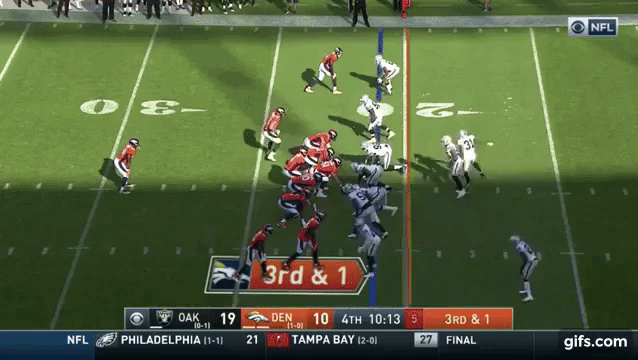
Combine that quickness with the flashes of power Freeman’s shown, and you could have a really nice back, who could compliment Lindsay to perfection.
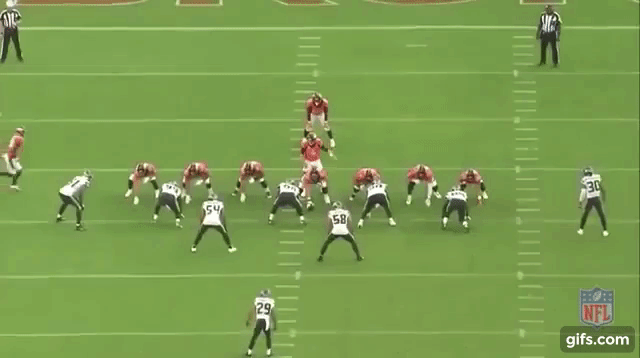
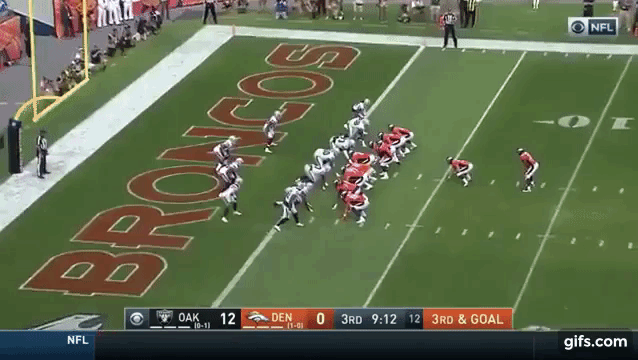
Freeman’s value down on the goal line and in short down-and-distance could be crucial for the Broncos, allowing the offense to turn a real weakness in 2017 into a strength.
Embracing that power will be key in his development, allowing him to wear defenses down.
It all comes down Freeman’s vision, though. If he develops and learns to pick his spots, the sky is the limit for him as a bell-cow runner with deceptive quickness.
Chubb’s rollercoaster ride
Of course, no one thought the big headliners in the draft class would be the two Pac-12 running backs, with most of the attention rightfully centered around the fifth-overall pick, Bradley Chubb.
Playing in 83 percent of the defensive snaps, Chubb has been given a healthy workload and asked to do a lot. The results have been mixed, though, as the young edge rusher is learning a new position and has been tasked with doing a lot more than simply getting after the quarterback.
Chubb has been good against the run so far this season, leading all Broncos with four run-stuffs.
Teams have tried to test the rook out on the edge by running at him, and he’s held his own.
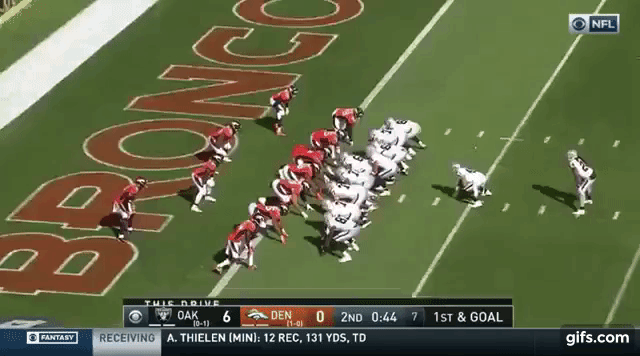
The former Wolfpack star has been strong setting the edge and is very competent in pursuit, showing a good motor to run down plays on the backside and conceding very few rushing yards to his side.
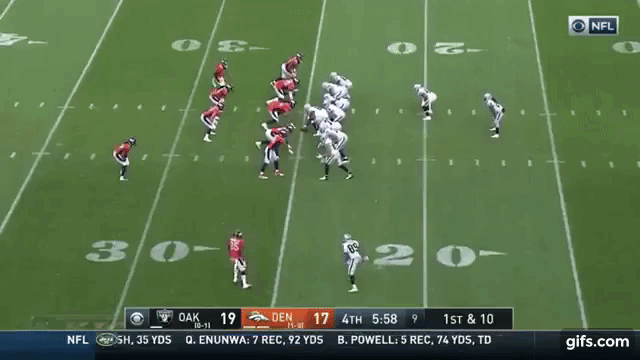
Opposing offenses have also picked on Chubb in coverage, and to his credit, No. 55 was better in coverage at NC State than most would have assumed, given he’s a former defensive end.
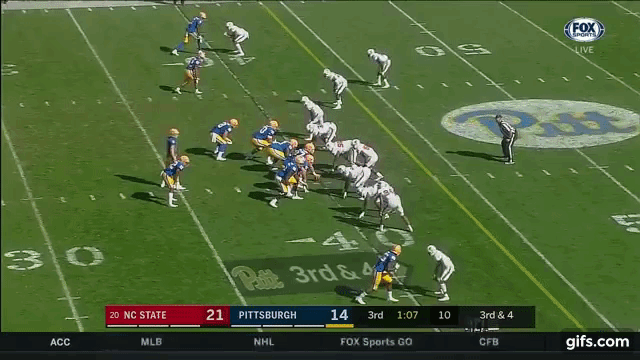
However, as a pro, the early returns for Chubb in coverage have not been good, as he’s looked out of his element and been burned on a few crucial plays.
The Seahawks attacked him with tight end Will Dissly, and both times resulted in big plays. Even when Chubb was in tight coverage with the tight end, he wasn’t able to make a play on the ball, and frankly, the defensive game plan shouldn’t have let a pass rusher with his skills drop that far back into coverage.
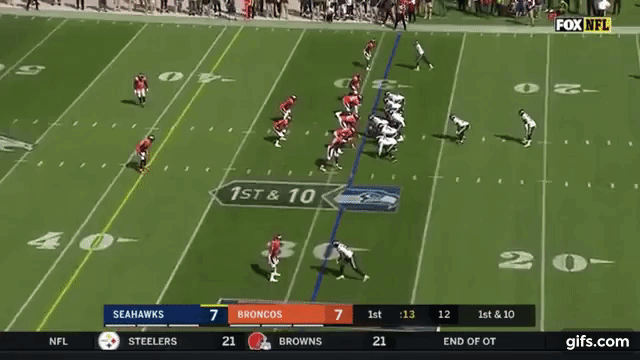
A play in which Chubb should be equipped to stop the pass is on short dump offs.
On a crucial 4th-and-1 play against Oakland, he had a potentially disastrous play, looking confused and out of his element. Dropping deep in coverage on an offensive lineman who was an eligible receiver right as the pass came to him in the flats to the Raiders fullback he was covering.
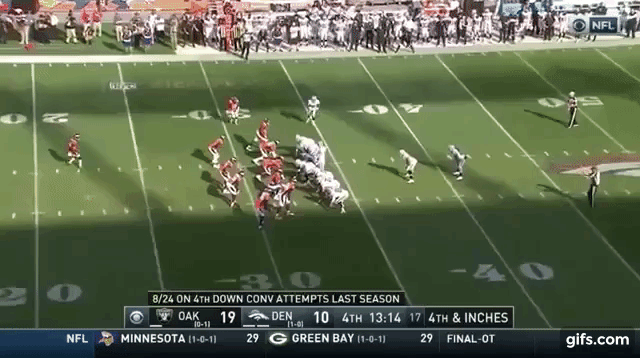
Even if the game plan isn’t putting Chubb in the best spots to succeed, he has to be less of a liability for the Broncos, or he’ll quickly be limited to a rotational role instead of being the full-time starter.
Of course, the reason Chubb was drafted in the first place was his ability to rush the passer, and so far he’s been underwhelming in that aspect of his game, creating 2.5 quarterback pressures with a QB hit, a QB hurry, and a half sack.
Maybe not an elite athlete or edge bender, No. 55 is still good in both areas. Though, so far, his impact rushing off the edge hasn’t been there.
Chubb needs to utilize his power better, attacking tackles off their inside shoulders. He needs to be more effective dominating on stunts, too, where he’s been given looks in creative blitz packages but hasn’t got to the quarterback or created the type of inside penetration you’d hope.
In Week 2, against Oakland left tackle and fellow rookie Kolton Miller, I was hoping to see Denver’s talented rook do more, as Miller shut him down and allowed little pressure.
Chubb has a great motor, he’s good in pursuit and a fairly well-rounded defender. Now we need to see the special traits that made him worthy of the fifth-overall pick.
In conclusion
We’ve seen some promising things from the Broncos 2018 draft class already, with a potential rookie of the year candidate in Lindsay and valuable contributions from Freeman and Chubb, who with improvements can turn into reliable starters by the end of the season.
Wide receivers Courtland Sutton and Tim Patrick—an honorary rookie, though he came out of college in 2017—have been just inches away from making huge plays themselves. Their prowess as contested-catch weapons is obvious, as is their ability to create plays after the catch.
Don’t be surprised if Sutton starts to get more targets in short yardage situations to see if he can wrack up YAC off of quick throws, a role that’s been given to Demaryius Thomas so far, though the vet hasn’t gotten the job done.
Linebacker Josey Jewell has played a bit and looks competent in doing what he’s asked to do; stopping the run on first and second down.
There will be opportunities for cornerback Issac Yidaom, too, who struggled in preseason with his ability to play the ball and his eye discipline, but he was playing sticky coverage. DaeSean Hamilton will also get some chances as the season progresses.
This all makes for a promising group of young rookies who could really help the Broncos immediately and be part of a core in the future. There still are plenty of things that need to be improved, but so far in just two weeks, Denver should be happy with what they’re seeing.
Comments
Share your thoughts
Join the conversation



